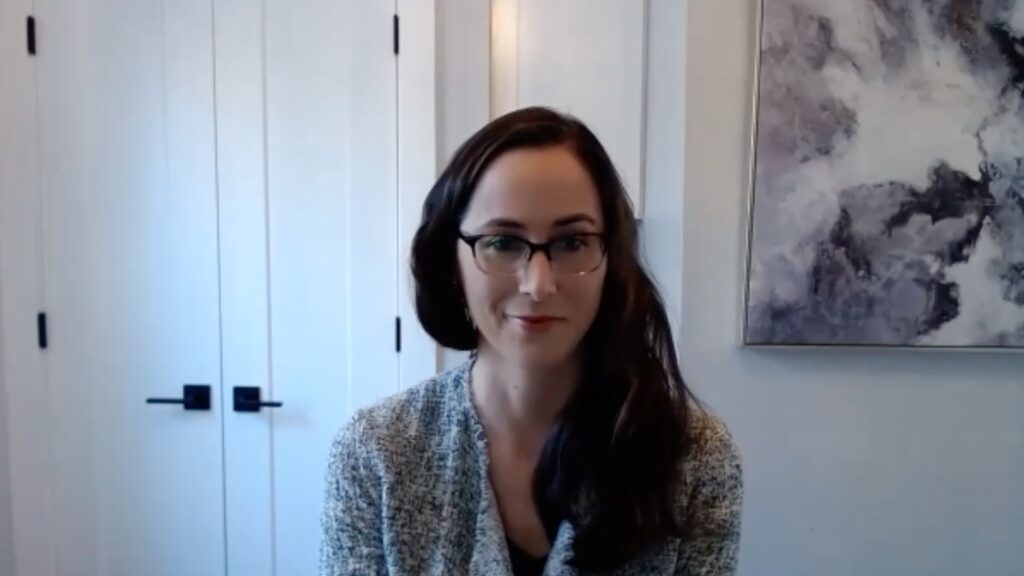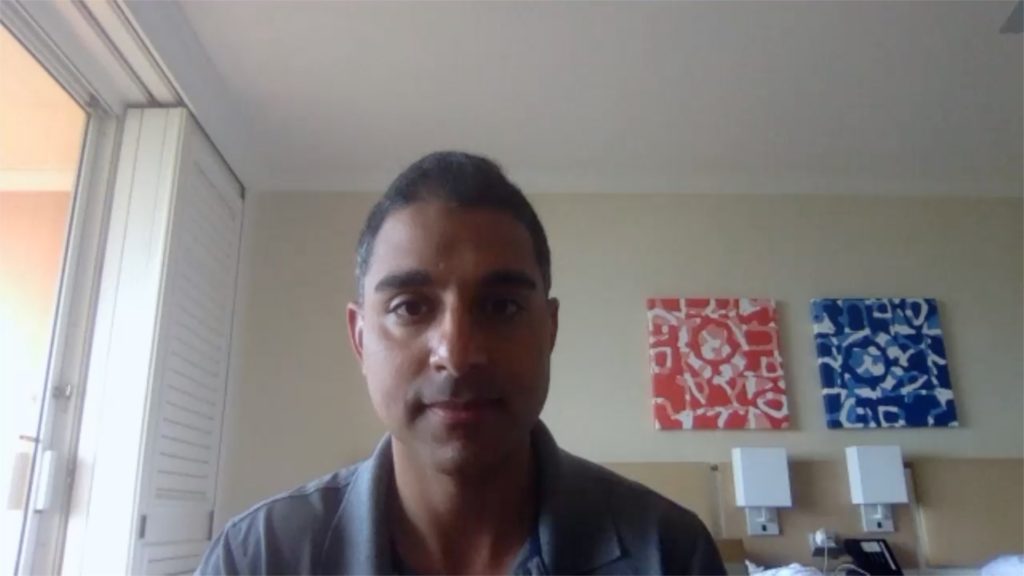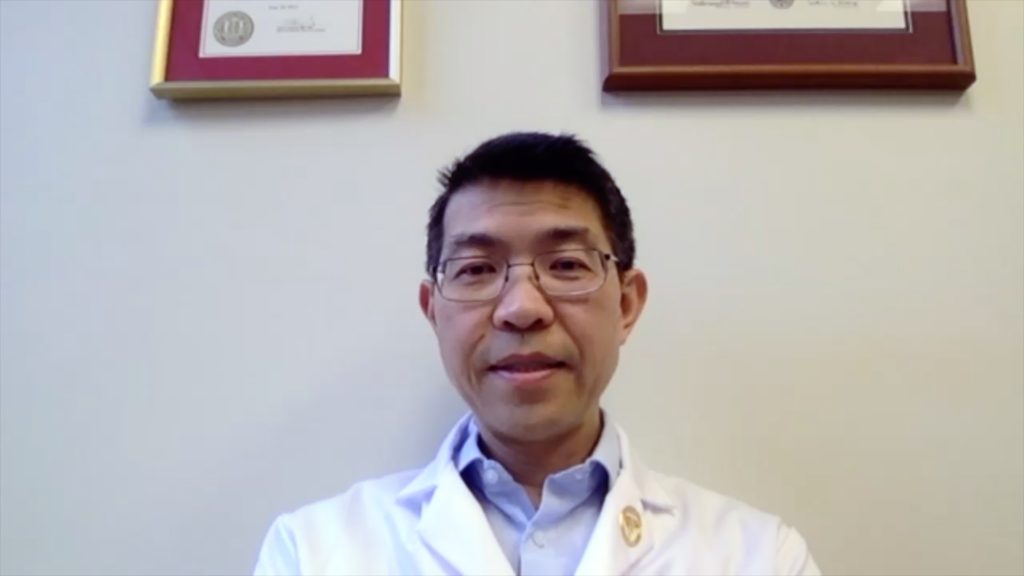Orbital inflammation can result from a number of inflammatory conditions including dacryoadenitis, myositis, cellulitis, optic perineuritis, periscleritis, orbital apicitis, thyroid eye disease (TED), and a focal mass.1 It may present as acute, subacute, or chronic disease and has a wide range of clinical manifestations, most commonly pain and periorbital swelling.2 Historically, systemic corticosteroids have been the standard of care, but other options include external beam radiotherapy, antimetabolites, alkylating agents, T-cell/calcineurin inhibitors, lymphocyte inhibitors, tumor necrosis factor-α inhibitors, and surgical debulking.3 However, responses to immunosuppressive therapy are suboptimal, prompting the development of alternative forms of treatment.4
In this spotlight interview, Dr Strianese discusses monoclonal antibodies in current use and in clincal development for the treatment of orbital inflammation.
-
What are the limitations of immunosuppressive therapy in the treatment of orbital inflammation?
There are no large-scale studies that can provide clinicians with robust data regarding treatment options, therefore, any conclusions from the published data should be drawn with caution. In addition, the actual incidence of adverse effects, particularly for the new immunosuppressant agents, has not been fully assessed yet, therefore further studies are necessary to address the risk/benefit ratio. Eventually, the cost of these therapeutic agents is relatively high when compared to the traditional immunosuppressant, therefore the use of the biologic should be justified by a reliable evidence that their efficacy is superior to the non-specific traditional agents with less side effects.
2. What is the rationale for the use of rituximab in orbital inflammation and what are its limitations?
Rituximab (RTX) is one of the better studied biological agent in oculoplastic. It is an anti-CD20 monoclonal antibody that targets CD20 on B cells. It is increasingly being prescribed for the treatment of autoimmune diseases, in many cases as an off-label drug. There some reports describing efficacy for IOI (Idiopathic Orbital Inflammation)4 and TED5. Particularly, for TED, RTX has shown to be effective in reducing the inflammatory signs /activity of the disease, decrease the TRAbs level and proptosis.5 However, RTX seems be effective only when used in the early phase of the disease. In addition, the use of RTX for CON (compressive optic neuropathy) is controversial and seems to carry the risk of worsening or causing an onset of CON:6 the hypothesized mechanism is the edema and expansion of the orbital volume, due to a massive lysis of B cells caused by RTX.7
RTX has been also successfully used in IgG4-related disease, particularly as corticosteroid-sparing agent.8
3. What is the rationale for targeting tumor necrosis factor alpha (TNF-α) in orbital inflammation?
In 1975, Lloyd and colleagues discovered an endotoxin-inducible serum factor named TNF had the capacity to cause necrosis of tumors.
Although initially identified as an anti-tumor molecule, TNF is now considered as a pleiotropic cytokine which plays a major role in immune or inflammatory responses as well as in apoptosis and cell survival regulation.9 Consequently, anti-TNF therapy has become a mainstay treatment for autoimmune diseases, since anti-TNF biologic agents are capable of mediating both complement-dependent and antibody-dependent cytotoxicity on a cell line overexpressing TNF.10
The experience with infliximab as successful salvage treatment for CON (compressive optic neuropathy) in TED is limited with only few cases reported in literature, treated because not responding to conventional treatments. Infliximab seems also to be effective in IgG4-Related Orbital Disease refractory to multiple immunosuppressive agents.12 The hypothesis was that TNF-blockers might exert their effect in IgG4-RD by interfering with the possible overexpressed TNF alpha due to fibrosis in this disease.11
4. What other antibodies are in clinical development for orbital inflammation?
Teprotumumab an experimental human monoclonal antibody which bind IGF-1R, has shown in a multicenter randomized trial to be more effective than placebo in reducing the clinical activity score and proptosis in patients with active moderate TED.13 If this figure is confirmed the main advantage of teprotumumab compared to other biologic agents is the meaningful decrease of the proptosis. However, the actual efficacy on patients with severe TED with CON or risk of corneal perforation has not been assessed yet. No severe side effects has been reported related to its use, however this should be confirmed on a large population.
A recent controlled multicentric study has shown that tocilizumab, a recombinant humanized IgG1 monoclonal antibody anti IL-6 receptor, led to a remarkable improvement in activity and severity in corticosteroid- resistant patients with moderate-to-severe TED.14
5. Which do you consider the most promising of the current and emerging therapeutic options?
Medications are made to treat human being; therefore, it is a very sensitive ground, where we should take every single step forward with great caution, particularly to not spread false hopes. Indeed, biological agents represent a great hope for the medicine in general: by using those medications we are seeing advances in therapy for oncology and for autoimmune disease too; in a not too distant future they might reduce the need of surgery, which eventually might result in a profound change for the orbital surgeon in the decision making process for a given autoimmune orbital disease..15 Biologics seems to be a strong therapeutic weapon, however as all the weapons, they can have undesirable effects that we should understand better before to use them widely. Ultimately, it is only a matter of time to learn how to use the appropriate biological agent for the appropriate disease.
Support: No support was received in the publication of this article.
Publication date: January 15 2019
References
- Pakdaman MN, Sepahdari AR, Elkhamary SM, Orbital inflammatory disease: Pictorial review and differential diagnosis, World J Radiol, 2014;6:106-15.
- Swamy BN, McCluskey P, Nemet A, et al., Idiopathic orbital inflammatory syndrome: clinical features and treatment outcomes, Br J Ophthalmol, 2007;91:1667-70.
- Yesiltas YS, Gunduz AK, Idiopathic Orbital Inflammation: Review of Literature and New Advances, Middle East Afr J Ophthalmol, 2018;25:71-80.
- Suhler EB, Lim LL, Beardsley RM, et al., Rituximab therapy for refractory orbital inflammation: results of a phase 1/2, dose-ranging, randomized clinical trial, JAMA Ophthalmol, 2014;132:572-8.
- Wang C, Ning Q, Jin K, et al., Does rituximab improve clinical outcomes of patients with thyroid-associated ophthalmopathy? A systematic review and meta-analysis, BMC Ophthalmol, 2018;18:46.
- Stan MN, Garrity JA, Carranza Leon BG, et al., Randomized controlled trial of rituximab in patients with Graves’ orbitopathy, J Clin Endocrinol Metab, 2015;100:432-41.
- Stan MN, Salvi M, MANAGEMENT OF ENDOCRINE DISEASE: Rituximab therapy for Graves’ orbitopathy – lessons from randomized control trials, Eur J Endocrinol, 2017;176:R101-r9.
- Chaudhry IA, IgG4-Related Orbitopathy, Middle East Afr J Ophthalmol, 2015;22:405-6.
- Ahmad S, Azid NA, Boer JC, et al., The Key Role of TNF-TNFR2 Interactions in the Modulation of Allergic Inflammation: A Review, Front Immunol, 2018;9:2572.
- Li P, Zheng Y, Chen X, Drugs for Autoimmune Inflammatory Diseases: From Small Molecule Compounds to Anti-TNF Biologics, Front Pharmacol, 2017;8:460.
- Strianese D. Update on Graves disease: advances in treatment of mild, moderate and severe thyroid eye disease. Curr Opin Ophthalmol. 2017 Sep;28(5):505-513.
- Karim F, Paridaens D, Westenberg LEH, et al., Infliximab for IgG4-Related Orbital Disease, Ophthalmic Plast Reconstr Surg, 2017;33:S162-s5.
13. Smith TJ, Kahaly GJ, Ezra DG, et al., Teprotumumab for Thyroid-Associated Ophthalmopathy, N Engl J Med, 2017;376:1748-61.
- Perez-Moreiras JV, Gomez-Reino JJ, Maneiro JR, et al., Efficacy of Tocilizumab in Patients With Moderate-to-Severe Corticosteroid-Resistant Graves Orbitopathy: A Randomized Clinical Trial, Am J Ophthalmol, 2018;195:181-90.
15 Strianese D, Rossi F, Interruption of autoimmunity for thyroid eye disease: B-cell and T-cell strategy, Eye (Lond), 2019;33:191-9.
Author Profile:
Dr Strianese obtained his medical degree, with summa cum laude, and he completed his Residency program at the University of Naples, Federico II in Italy. During his residency, he rotates at the Oculoplastic Unit at the Moorfield Eye Hospital in London. He received the prestigious PhD in head and neck science, from the University of Naples Federico II for his studies on the prognosis of the rhabdomyosarcoma of the orbit. He did a clinical and research Oculoplastic Fellowship in Vancouver, University of British Columbia, mentor Prof Jack Rootman. He was then appointed as Assistant Professor at the University Federico II, Naples, Italy and then progressed to the rank of Associate Professor, qualified by the National Professorship Committee in Italy.
In 2016, Dr Strianese became the Chief of the Oculoplastic and Orbital Division in the Department of Ophthalmology at (KKESH) under the auspices of the Wilmer Eye institute and he was appointed Adjunct Associate Professor at Johns Hopkins University from October 2015 to October 2017. Currently he is Director of CME Department, Head of the Orbital Unit and Senior Academic Consultant at King Khaled Eye Specialist Hospital.
He is member of the Editorial Board of Ophthalmic Plastic and Reconstructive Surgery.
In his research in Oculoplastic Dr Strianese focused on both the basic science and clinical aspects of Orbital diseases. Particularly, he introduced new treatment modalities for the orbital diseases including new surgical techniques and prognostic factors for specific diseases by means of translational basic science researches. He is 20-year experienced orbital surgeon and an expert of endoscopic surgery, particularly for lacrimal system.
He is Committee member and current secretary of the ITEDS (International Thyroid Eye Disease Society). He was the Italian Committee member representative for 2009-2012 at the European Society of Ophthalmic Plastic and Reconstructive Surgery (ESOPRS) and he is active member of the Orbital Society.
Dr Strianese was evaluated as best School of Medicine teacher. He received “Giuseppe de Gennaro” awards for the best research on Ocular trauma. He has been Visiting Professor in many outstanding academic centres in many different countries. He has been invited as a Speaker and Chairman in more than 100 meetings all over the world. Dr. Strianese has participated in International and National research projects, selected for funding on the basis of competitive selection. He is author of more 50 peer reviewed articles published in high ranked journals.







